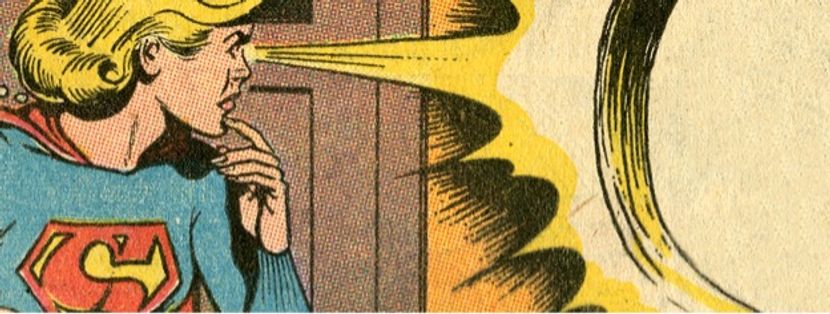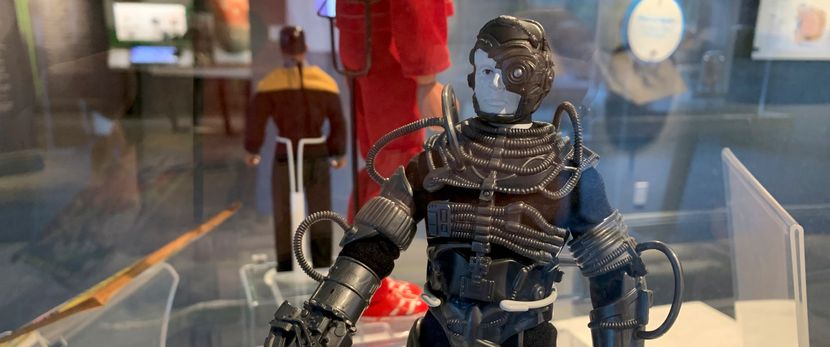Author: Aubrey Minshew, Museum Specialist, Truhlsen - Marmor Museum of the Eye®
The museum’s collection is full of surprises. In addition to ophthalmic instruments and old spectacles, there is a small corner of the museum’s storage space dedicated to toys that imagine what the future of vision could be. From X-Ray Spex to Star Trek action figures, the museum’s toy collection is a time capsule of the ways that authors, movie makers, and television producers have imagined how the future might enhance or restore eyesight, and how that imagination made it into the hands of fans all over the world.

There is a common trope in the science fiction genre in which characters gain extraordinary seeing powers through a futuristic device. In fact, a science fiction story in 1894 called “A Journey in Other Worlds” imagined a device that could see through solid objects -- a year before the X-ray was invented. Interestingly enough, the story’s author, John Jacob Astor IV, is also well known to some as the richest person to die in the RMS Titanic disaster in 1912.
![2013.020.00001[22].jpg A pair of paper novelty eyeglasses. The glasses are black and the lenses have red and white circles radiating out from their center. There is a small hole in the lenses and the top of each lens reads XRAY VISION.](/spotlight/image.axd?id=e33ffd8f-f774-4dd5-80e3-b611c83f082e&t=637746740435100000)
The “devices that enhance vision” trope has been picked up by many franchises since 1894. Great examples of this are the futuristic vision devices in the popular television and film series “Star Trek.” In the series “Star Trek: The Next Generation,” a character named LtCdr. Geordi LaForge (played by actor LeVar Burton) was born blind, but wears a mechanical prosthesis called a VISOR that allows him to see radio waves, infrared and ultraviolet light. In the series, we learn that VISOR stands for Visual Instrument and Sensory Organ Replacement. Action figures like the one in the museum’s collection that features the VISOR and were a hands-on way for fans of all ages to imagine a future where technology could fix blindness, and where a person born with a disability could go on to become the chief engineer of the starship Enterprise.

The “Star Trek” universe also imagines a future where the eye can be replaced completely by machinery through one of the primary antagonists. In “The Next Generation,” we meet an assimilative race of part-organic, part-mechanical beings called the Borg, short for cyborg. The Borg take the common trope of enhanced vision and give it a more frightening edge, since the Borg take living beings and forcibly replace their organic eyes with implants that both project a laser beam and allows the new Borg to see the entire spectrum of light. Even though the Borg action figure in the museum’s collection clearly represents a villain, it also represents an early 1990s imagining of the “bionic” retinal protheses that are now becoming a reality.

Whether or not all the futuristic eye enhancements of “Star Trek” become reality, the science fiction toys in the museum’s collection continue to be concrete examples of how science fiction can capture the imagination of fans and scientists alike. Since the popularity of science fiction doesn’t appear to be waning any time soon, surely we can expect sci-fi’s representation of vision to continue to boldly go where no one has gone before.
The museum’s collection of science fiction toys will be on display in the Amazing Eye Gallery until February 9, 2022. For museum hours and more information about changing exhibits, please visit aao.org/visit-museum.